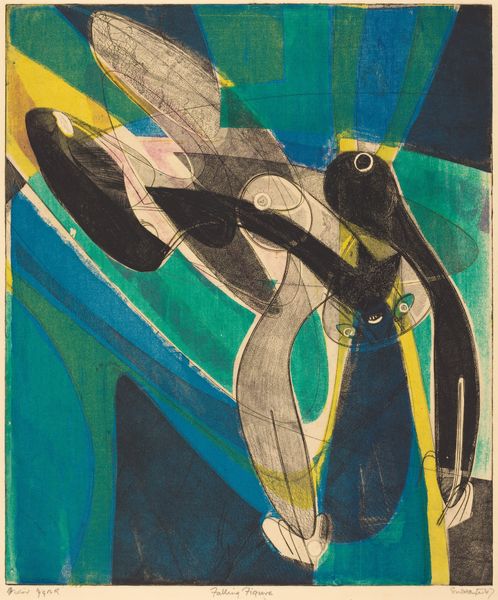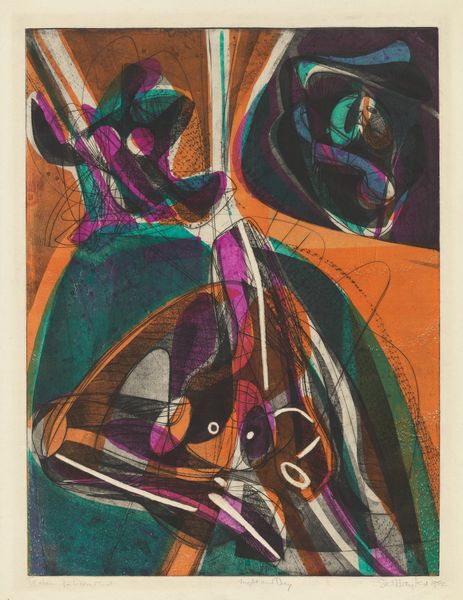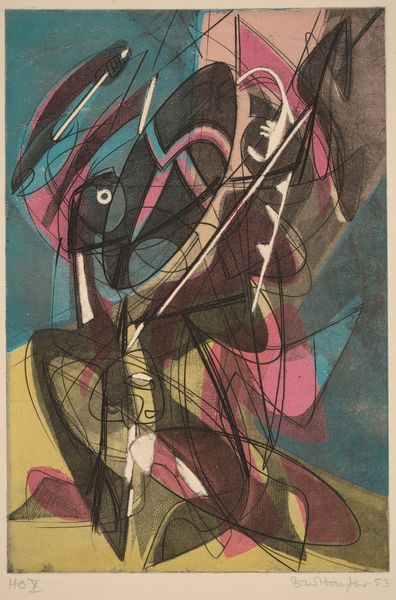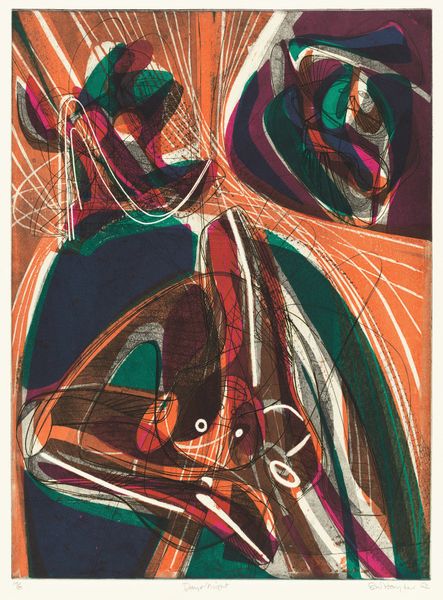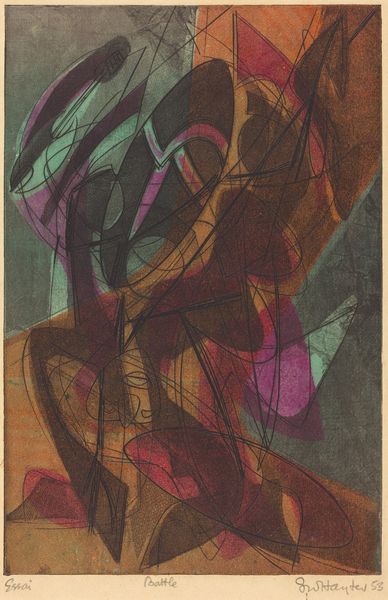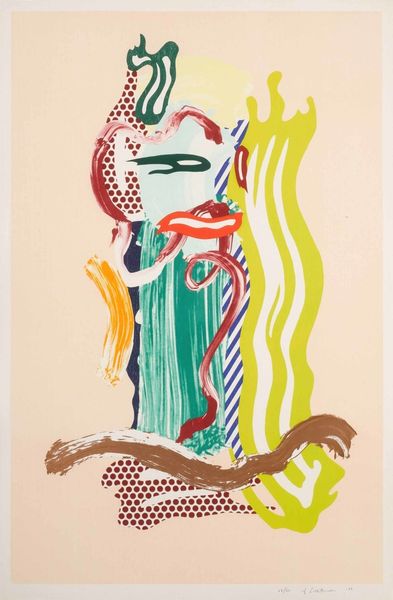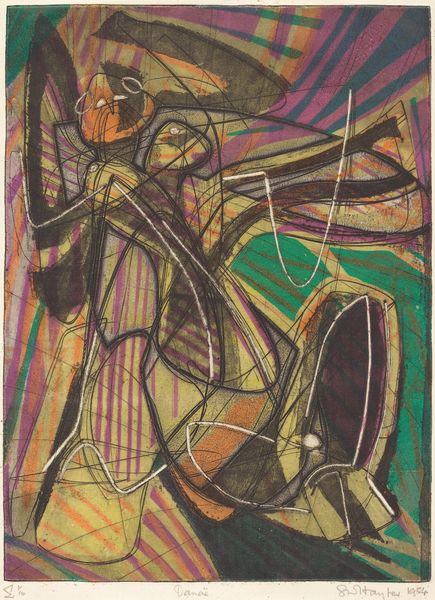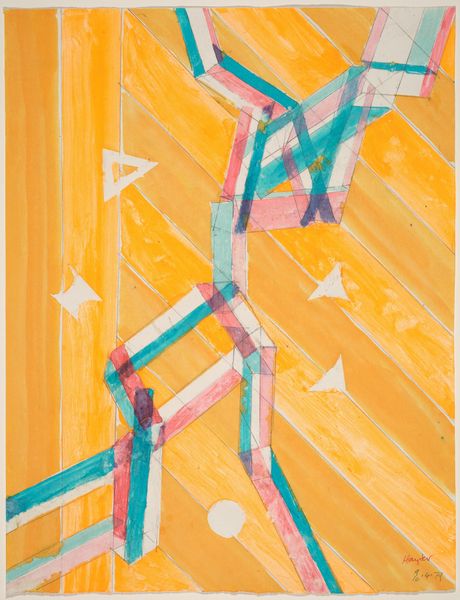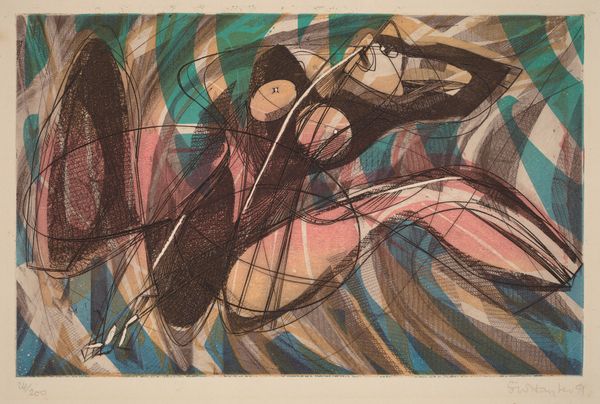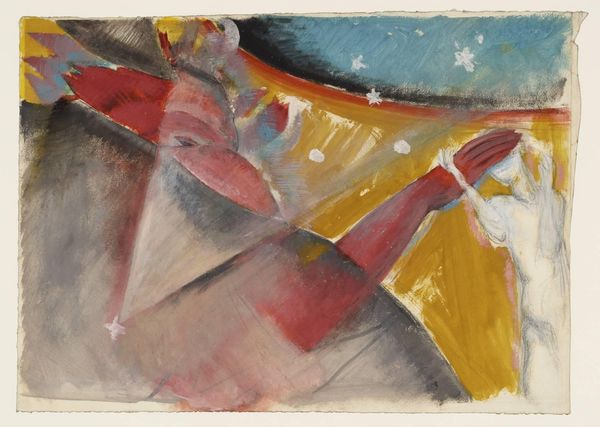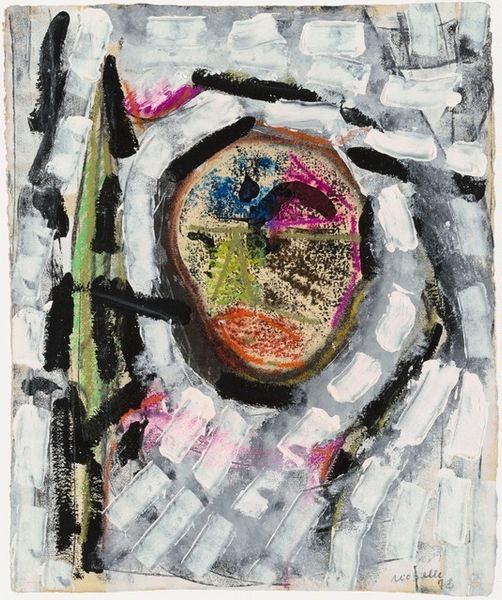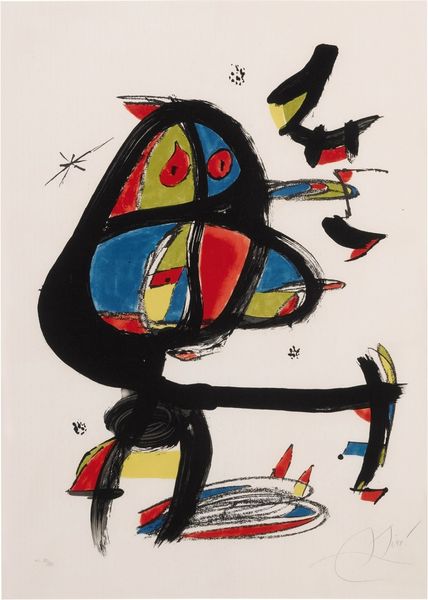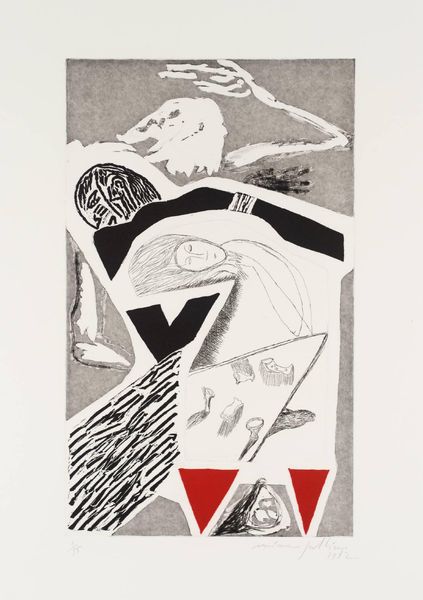
mixed-media, print, etching
#
abstract-expressionism
#
mixed-media
# print
#
etching
#
form
#
oil painting
#
abstraction
#
line
Dimensions: plate: 45.3 x 37.9 cm (17 13/16 x 14 15/16 in.) sheet: 63.6 x 48.5 cm (25 1/16 x 19 1/8 in.)
Copyright: National Gallery of Art: CC0 1.0
Curator: This striking print, ladies and gentlemen, is entitled "Falling Figure." Stanley William Hayter created it in 1947 using mixed-media etching techniques. It's an exceptional example of abstract expressionism from the period. Editor: It certainly plunges you in! The overlapping lines create a dynamic sense of movement—a whirlwind of color against that teal backdrop. The eye struggles to find a fixed point, which effectively communicates the sensation of falling. Curator: Indeed. Hayter was deeply influenced by Surrealism, and you can see that legacy in his approach to form and representation. He also ran Atelier 17, a highly influential printmaking studio in Paris and later New York, which impacted a generation of artists. Editor: I find it interesting how the dense network of lines—etching really lends itself to that—creates a sense of depth and volume, even as the image remains resolutely abstract. See how the overlaid patterns create moiré effects, pushing the figure toward and away from us. It creates the instability associated with descent, of course. Curator: Many artists associated with Atelier 17, and the abstract expressionist movement in general, were grappling with the anxieties of the postwar era, as the potential horrors of the atomic age became chillingly real. Could this falling figure also reflect that sense of freefall, both individual and societal? Editor: It's possible. However, if you allow the lines to resonate in their purest compositional form, observe the balance achieved among diagonals. Even with its apparent chaos, the artist employed remarkable skill. The figure seems to be propelled by internal and external forces. Curator: Absolutely. Hayter's deep knowledge of technique and the cultural context surrounding its use is what brought him renown. And yet his images, born from intellectual considerations, also trigger visceral feelings within those who see them. Editor: Agreed, which speaks to his success in harnessing formalism to generate emotional resonance. One sees both intent and chaos in the method. Curator: Thank you for illuminating it so, with equal vision and form. Editor: The pleasure was all mine, understanding it more so due to this context and conversation.
Comments
No comments
Be the first to comment and join the conversation on the ultimate creative platform.
